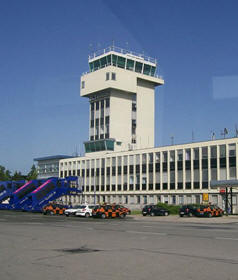|
|||||||||||||||||
|
|
|
|||
|
By Daniel Baxter |
||||
 |
January 28, 2011 - The Federal Aviation Administration
(FAA) on Thursday announced that
A
Category 1 rating means the country’s civil aviation
authority complies with ICAO standards. A Category 2
rating means a country either lacks laws or regulations
necessary to oversee air carriers in accordance with
minimum international standards, or that its civil
aviation authority, equivalent to the FAA for aviation
safety matters is deficient in one or more areas, such
as technical expertise, trained personnel, recordkeeping
or inspection procedures.
With the International Aviation Safety Assessment (IASA)
Category 2 rating, Croatian air carriers could not
establish new service to the
|
|||
|
As part of
the FAA’s IASA program, the agency assesses the civil aviation
authorities of all countries with air carriers that operate or
have applied to fly to the
Countries
with air carriers that fly to the The United States Federal Aviation Administration (FAA) established the IASA program through public policy in August of 1992. FAA's foreign assessment program focuses on a country's ability, not the individual air carrier, to adhere to international standards and recommended practices for aircraft operations and maintenance established by the United Nation's technical agency for aviation, the International Civil Aviation Organization (ICAO). |
||||
|
The FAA has established two ratings for the status of countries at the time of the assessment: does comply with ICAO standards, and does not comply with ICAO standards. They are defined as follows:
- Category 1, Does
Comply with ICAO Standards: A country's civil aviation authority has
been assessed by FAA inspectors and has been found to license and
oversee air carriers in accordance with ICAO aviation safety standards.
- Category 2, Does
Not Comply with ICAO Standards: The Federal Aviation Administration
assessed this country's civil aviation authority (CAA) and determined
that it does not provide safety oversight of its air carrier operators
in accordance with the minimum safety oversight standards established by
the International Civil Aviation Organization (ICAO).
This rating is
applied if one or more of the following deficiencies are identified:
1. The country
lacks laws or regulations necessary to support the certification and
oversight of air carriers in accordance with minimum international
standards;
2. The CAA lacks
the technical expertise, resources, and organization to license or
oversee air carrier operations;
3. The CAA does
not have adequately trained and qualified technical personnel;
4. The CAA does
not provide adequate inspector guidance to ensure enforcement of, and
compliance with, minimum international standards;
5. The CAA has
insufficient documentation and records of certification and inadequate
continuing oversight and surveillance of air carrier operations.
This category
consists of two groups of countries.
One group are
countries that have air carriers with existing operations to the |
|
|
| ©AvStop
Online Magazine
Contact
Us
Return To News
|
|

